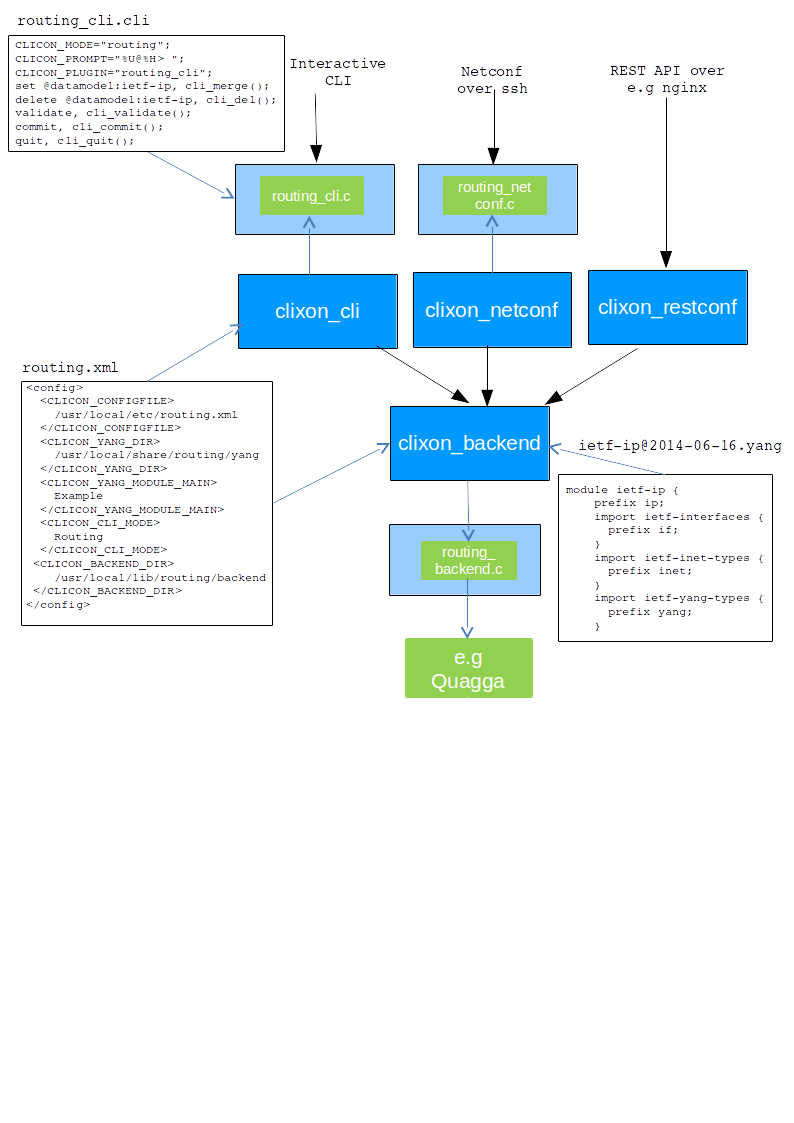Clixon is an automatic configuration manager where you generate interactive CLI, NETCONF, RESTCONF and embedded databases with transaction support from a YANG specification.
- Frequently asked questions
- CHANGELOG recent changes.
- XML datastore
- Netconf support
- Restconf support
- Reference manual (Note: the link may not be up-to-date. It is better to build your own:
cd doc; make doc) - Routing example
- Clicon and Clixon project page
- Tests
A typical installation is as follows:
configure # Configure clixon to platform
make # Compile
sudo make install # Install libs, binaries, and config-files
sudo make install-include # Install include files (for compiling)
One example application is provided, a IETF IP YANG datamodel with generated CLI and configuration interface.
Clixon depends on the following software packages, which need to exist on the target machine.
- CLIgen is required for building Clixon. If you need to build and install CLIgen:
git clone https://github.com/olofhagsand/cligen.git
cd cligen; configure; make; make install
- Yacc/bison
- Lex/Flex
- Fcgi (if restconf is enabled)
- Qdbm key-value store (if keyvalue datastore is enabled)
There is no yum/apt/ostree package for Clixon (please help?)
Clixon is dual licensed. Either Apache License, Version 2.0 or GNU General Public License Version 2; you choose.
See LICENSE.md for the license.
We implemented Clixon since we needed a generic configuration tool in several projects, including KTH. Most of these projects were for embedded network and measuring-probe devices. We started with something called Clicon which was based on a key-value specification and data-store. But as time passed new standards evolved and we started adapting it to XML, Yang and netconf. Finally we made Clixon, where the legacy key specification has been replaced completely by YANG and using XML as configuration data. This means that legacy Clicon applications do not run on Clixon.
The figure shows the SDK runtime of Clixon.
YANG and XML is at the heart of Clixon. Yang modules are used as a specification for handling XML configuration data. The spec is also used to generate an interactive CLI client as well as provide Netconf and Restconf clients.
The YANG RFC 6020 is implemented with the following exceptions:
- conformance: feature, if-feature, deviation
- identity, base, identityref
- list features: min/max-elements, unique, ordered-by
There are also new features in YANG 1.1 YANG RFC 7950, most of which are not implemented.
